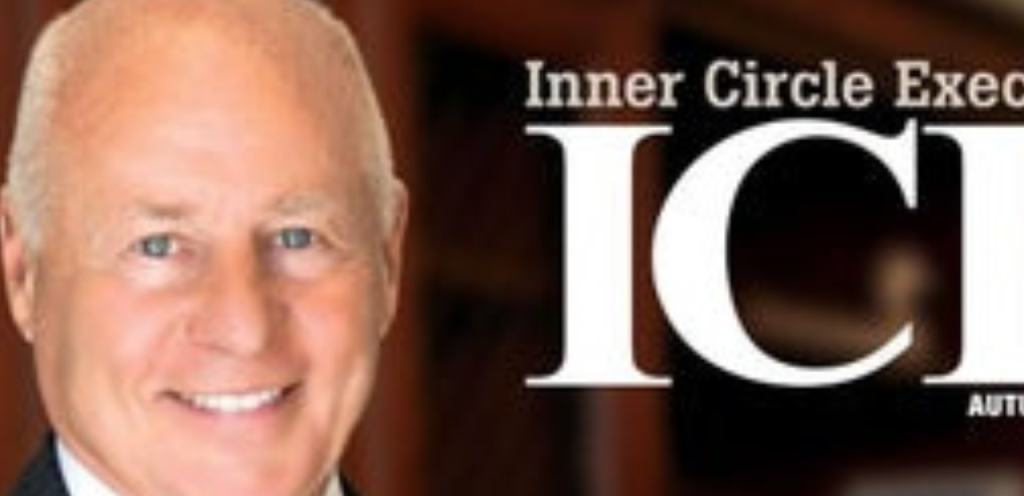For a software engineering interview, dress in smart casual attire. Opt for a neat, professional look without being overly formal.
Deciphering the suitable dress code for a software engineering interview can be perplexing. Your outfit should reflect a blend of comfort and professionalism, signaling to potential employers that you are serious about the role while also being adaptable to the often-relaxed tech industry atmosphere.
Ensuring your attire is clean, wrinkle-free, and fits well is essential. It’s best to avoid extremes; neither a full suit nor casual wear like t-shirts and flip-flops is typically recommended. Instead, aim for a middle ground such as slacks or khakis paired with a button-down shirt or blouse. Remember, first impressions matter, and your attire can speak volumes before you even share your technical prowess. Striking the right balance in your interview attire can set the stage for a positive and productive interaction.
Introduction To The Software Engineering Interview Process
Introduction to the Software Engineering Interview Process
Understanding The Importance Of First Impressions
First impressions are pivotal. From the moment you step into the interview room, every detail from your attire to your posture is under scrutiny, contributing to the crucial first impression you make. It’s not simply about looking professional; it’s about projecting confidence and attention to detail through your attire. In the context of a software engineering interview, striking the right balance between formal and casual can speak volumes about your understanding of the company culture and your adaptability. Overview of Software Engineering Interview StagesOverview Of Software Engineering Interview Stages
The software engineering interview process typically unfolds in multiple stages. Each level of assessment aims to uncover different facets of your capabilities. An overview of the stages may include:- Screening Call: An initial conversation, often over the phone or video, to evaluate your qualifications and communication skills.
- Technical Assessment: Usually an online coding test or a take-home assignment to demonstrate your technical expertise.
- Onsite Interviews: A series of in-person interviews that often include whiteboard coding sessions, problem-solving discussions, and behavioral questions.
- Team Fit: An opportunity to meet with potential colleagues to assess compatibility with the team’s work style and culture.

Credit: www.theforage.com
Decoding The Dress Code
Casual Vs. Business Casual Vs. Formal
For software engineering aspirants, the perennial question is: casual, business casual, or formal? Each dress code carries its unique set of expectations and messages. Here’s a breakdown:- Casual: Embraces comfort with a relaxed demeanor. Think T-shirts, jeans, and sneakers. It’s a fit for startups or tech giants with a laid-back environment.
- Business Casual: A step up, blending professionalism with comfort. Tailored shirts, chinos, and dress shoes often hit the mark. Ideal for companies with a semi-formal atmosphere.
- Formal: Highest degree of professionalism. A suit, tie, dress shirt, and formal shoes mark this dress code. Reserved for corporate settings where traditional business attire is the norm.
Company Culture And Dress Code Expectations
Every company has a distinct culture and dress code, often reflecting their work environment and ethos. Tech giants known for innovation may foster a casual dress policy, whereas fintech startups or corporate enterprises may expect a more traditional, formal appearance. So how can you be sure? Research is your best friend. Start by investigating the company’s official website and social media channels. Look for images of company events, office life, or team photos to get a glimpse of the everyday attire. If you know someone who works there, don’t hesitate to ask. Understanding the company’s culture can be a deciding factor in how you dress.| Company Type | Casual | Business Casual | Formal |
|---|---|---|---|
| Tech Startups | Typically preferred | Sometimes appropriate | Rarely required |
| Enterprise Corporations | Less common | Often expected | Common in client-facing roles |
| Mid-sized Companies | Varies widely | Common ground | Depends on the role and department |
Men’s Interview Attire For Software Engineers
Suits And Blazers: To Wear Or Not To Wear?
The tech industry is known for its casual dress code, but is it appropriate to suit up for your interview? This decision largely depends on the company’s culture and the position you’re applying for. A neat blazer or suit can convey seriousness and professionalism without appearing over the top. Here are some points to consider:- Company Research: Investigate the company’s dress code. Startups might prefer a relaxed look, whereas corporate environments may require a more formal approach.
- Suit Selection: If you decide to wear a suit, choose a solid, neutral color like navy, gray, or charcoal. Fit is crucial—ensure it’s well-tailored to your physique.
- Blazers: For a semi-formal touch, a blazer can be a versatile choice. Pair it with slacks or khakis for a balanced look.
Shirt, Trousers, And Shoes: Balancing Comfort And Professionalism
The core of your interview ensemble should focus on aesthetics and comfort. This intersection ensures you stay at ease and look polished throughout the interview process.| Item | Recommendations |
|---|---|
| Shirts |
|
| Trousers |
|
| Shoes |
|
Women’s Interview Attire For Software Engineers
Dressing For Success: Options Beyond The Suit
Classic business attire is not always mandatory for software engineering interviews. Smart casuals can often make the perfect balance, providing comfort while maintaining a professional look. Consider the following options:- Smart Blouses – A well-fitted blouse in a neutral color can be paired with slacks or a pencil skirt.
- Cardigans and Blazers – These can add a layer of sophistication to your outfit. Opt for solid colors or subtle patterns.
- Dresses – A simple sheath dress can serve as a comfortable yet professional choice.
Accessorizing: The Do’s And Don’ts For A Professional Look
Accessories can complete your interview look, but it’s important to keep them appropriate and understated. Here are a few tips to ensure your accessories enhance your professional image:| Accessory Type | Do’s | Don’ts |
|---|---|---|
| Jewelry | Opt for simple pieces like stud earrings or a delicate necklace. | Avoid flashy or noisy jewelry that can be distracting. |
| Watches | Choose a sleek and functional watch that complements your outfit. | Steer clear of overly casual or sporty watches. |
| Shoes | Wear comfortable, closed-toe shoes with a moderate heel. | Refrain from wearing sneakers, flip-flops, or overly high heels. |
| Bag | Bring a neat, structured tote or briefcase to carry your documents. | Avoid bulky or overly casual bags that can seem unprofessional. |
The Role Of Company Research In Choosing Your Outfit
Investigating The Company’s Dress Code
Start your company research by thoroughly investigating the company’s dress code. Each company will have its own unique set of standards and expectations when it comes to professional attire. Look for clues on the company’s website, especially the ‘About Us’ or ‘Careers’ section. Company social media profiles can also be rich with information, revealing how employees dress for events and day-to-day activities. Don’t forget to check online reviews and employee testimonials for any mentions of the dress code. Here’s a bullet-point checklist to guide your investigation:- Review the company website and social media for dress code hints.
- Examine employee photos if available.
- Read company reviews on job-related websites.
- Consider reaching out to current employees for insights.
Adapting Your Outfit To The Type Of Software Company
Once you have a clear understanding of the company’s dress code norms, it’s vital to adapt your outfit to the type of software company you’re interviewing with. A tech startup might have a more casual dress code compared to a well-established enterprise software corporation. Here’s a table to breakdown outfit suggestions based on the type of company:| Type of Company | Suggested Outfit |
|---|---|
| Startup | Smart Casual (e.g., clean jeans with a blouse or button-up shirt) |
| Corporate Tech Company | Business Professional (e.g., suits, formal dresses) |
| Agency | Business Casual (e.g., khakis, dress pants, skirts with a smart top) |
Accessorizing For The Interview
When it comes to acing a software engineering interview, a stellar resume and outstanding coding skills are just part of the equation. Your appearance also plays a key role in making a memorable first impression. Accessorizing smartly can enhance your professional image and give you an edge in these competitive interactions. Let’s explore how carefully selected jewelry, watches, and other accessories can complement your interview attire without overshadowing your qualifications and expertise.
Selecting Appropriate Jewelry And Watches
Choosing the right jewelry and watches for a software engineering interview is about striking a balance: you want to express your personal style, yet remain understated and professional. Here are some tips to guide you:- Minimize Distractions: Select pieces that are simple and elegant—a watch, for instance, should be functional and sophisticated.
- Quality over Quantity: A classic watch or a tasteful pair of earrings often speaks volumes about your attention to detail compared to multiple accessories.
- Conservatism is Key: In most tech environments, conservative choices tend to be more appropriate. Opt for subtle rather than flashy.
Belt, Bag, And Other Accessories: Enhancing Your Professional Image
Your choice of a belt, bag, and other accessories can subtly convey your attentiveness to detail and organization skills. Follow these guidelines to ensure your accessories align with your professional image:| Accessory | Tips |
|---|---|
| Belt | Choose a belt that matches your shoes for a polished look. Leather is a safe, classic choice. |
| Bag | Opt for a clean, structured bag—briefcase, portfolio, or a laptop bag that is devoid of wear or scuffs. |
| Other Accessories | Wear socks that match the color of your pants or your shoes. If you’re considering a tie, ensure it harmonizes well with your shirt. |
Personal Grooming And Hygiene Essentials
Hair, Facial Hair, And Nail Care
Maintaining a well-groomed appearance with neat hair and nails goes a long way in projecting a professional image. Keep your hair styled in a manner that’s comfortable but also tidy and workplace-appropriate. Tangles and flyaways can detract from your overall look, so taking the time to address these details is important.- Trim any split ends and style your hair in a neat fashion.
- For those with long hair, consider pulling it back to avoid distraction during the interview.
- Beards and mustaches should be neatly trimmed.
- Clean, trimmed nails show attention to detail, so don’t overlook this aspect.
Perfume And Cologne: A Delicate Balance
When it comes to scents, moderation is key. Choose a light fragrance or skip it entirely for your interview. You want to ensure that any scent you wear is not overpowering, as it can be distracting or unpleasant in close quarters. Some people have allergies or sensitivities, so it’s best to err on the side of caution.- Apply fragrance minimally – a small dab on the wrists or a light spray is sufficient.
- Consider using unscented deodorant or body products for the day.
| Hair | Facial Hair | Nail Care | Fragrance |
|---|---|---|---|
| Keep it neat and out of your face. | Trimmed and tidy. | Short and clean. | Moderate use, if any. |
Tech Startup Vs Corporate Giants: Dress Code Variations
Understanding The Startup Culture And Attire Flexibility
Startup environments are typically known for their dynamic and innovative atmosphere. As opposed to the formality of their corporate counterparts, these companies often foster a casual and comfortable work environment. This is directly mirrored in the clothing you might encounter when stepping into a startup office.- Jeans and T-shirts are common, often branded with the company logo.
- Sneakers and open-toed shoes replace the traditional dress shoes.
- Layering with hoodies or casual blazers is typical for both comfort and style.
- Accessories are often used to express individuality.
Corporate Dress Codes: Navigating The Conservatism
Corporate giants, on the other hand, might exhibit a strong inclination towards formality and established dress standards. This often translates to a more conservative approach to interview attire. In these settings, the traditional suit-and-tie combination isn’t just a safe bet—it’s an expectation.| Men’s Corporate Attire | Women’s Corporate Attire |
|---|---|
|
|
Region-specific Dress Code Considerations For Interviews
Cultural Sensitivity And Regional Expectations
Understanding the cultural expectations of the region where your interview will take place is pivotal. Different cultures have unique norms that could significantly influence your choice of attire. It is crucial to research the company culture and dress code standards in that geographical area before making your selection.- In countries such as Japan or South Korea, formal business attire is often expected, demonstrating respect and formality.
- In contrast, tech hubs like Silicon Valley in the USA tend to embrace a more casual business dress code, in alignment with the innovative and relaxed nature of many startups.
- European nations can vary widely with cities like London typically leaning towards formality and Berlin known for a more laid-back approach.
Climate Considerations And Appropriate Attire
Regional climate also plays a key role in choosing the right attire. It’s essential to ensure your comfort without compromising on professionalism. Dressing appropriately for the weather conveys that you are adaptable and considerate of environmental factors.| Climate | Appropriate Attire Examples |
|---|---|
| Hot/Tropical |
|
| Cold/Arctic |
|
| Temperate |
|
Common Mistakes To Avoid
Overdressing Vs. Underdressing: Finding The Middle Ground
Finding the sweet spot between formal and casual can be tricky. You want to appear professional without overdoing it. Companies, particularly in the tech industry, tend to favor a more business-casual look over formal business attire. But what does that entail?- Biz-caz essentials – For men, this might mean chinos with a button-up shirt, and for women, a blouse paired with a skirt or trousers.
- Avoid suits unless explicitly stated by the company – they often signify that you’re not in tune with the typical tech company culture.
- Ensure clothes are well-fitted and comfortable to maintain confidence without appearing disheveled.
Avoiding Distractions In Your Outfit Choices
Your outfit should accentuate your professional demeanor, not distract from it. Avoid loud colors and busy patterns that can divert attention away from the conversation. Instead, opt for:- Subtle, solid colors
- Minimalistic, clean designs
- Accessories that complement rather than overwhelm
The Virtual Interview Wardrobe
Optimizing Your Appearance For Video Calls
When preparing for a video call, it’s about more than just dressing up; it is about presenting a polished version of yourself that comes across effectively on camera. Make sure your clothes are well-fitted and crease-free. Choose pieces that give you a sleek silhouette and complement your frame. Aim for a neat hairstyle, subtle makeup (if applicable), and ensure that any facial hair is well-groomed.- Camera Position: Adjust your camera to eye level to create direct virtual eye contact.
- Lighting: Position yourself in a well-lit area or use a ring light to illuminate your face evenly without casting harsh shadows.
- Background: Keep your background simple and distraction-free to maintain focus on you.
The Importance Of Color And Pattern Choices On Camera
The colors and patterns you choose play a pivotal role in how you’re perceived on camera. Contrast is key—wearing colors that stand out against your background helps to draw attention to your presence.| Colors | Tips |
|---|---|
| Solid, Muted Colors | These are less distracting and project professionalism. Think navy blue, gray, or forest green. |
| Bright Colors | Use in moderation. A pop of color can be effective but avoid overdoing it. |
Interview Dress Code For Remote Positions
Does Dressing Up Matter For Remote Interviews?
Dressing up for remote interviews speaks volumes about your professionalism and can set the tone for the meeting. While you won’t need to worry about the full head-to-toe ensemble, the visible parts of your attire during the video call should convey respect for the interviewer and an awareness of the company’s culture. Maintaining a business-professional or business-casual look—in line with what is expected for the role you’re applying for—can have a positive impact. This applies even when the interview is conducted from the comfort of your own home.Communicating Professionalism In A Remote Context
Conveying professionalism in a remote context goes beyond just the clothes you wear. It also encompasses the setting from which you conduct the interview. Ensure a neutral, clutter-free background, good lighting, and minimal noise interference. Here are some elements to keep in mind:- Top Half Attire: Opt for a neat, pressed shirt or blouse—solid colors work best on camera.
- Grooming: A well-groomed appearance is still crucial; ensure your hair and any facial hair are tidy.
- Jewelry and Accessories: Keep it minimal to avoid distractions.
- Environment: Choose a quiet space with a clean, professional-looking background.
- Technical Setup: Test your internet connection, camera, and audio settings beforehand to avoid technical glitches.
Final Tips And Tricks For Dressing For A Software Engineering Interview
Planning Your Outfit The Night Before
Organizing your ensemble ahead of time eliminates last-minute decisions and stress. Consider these steps:- Choose an outfit that reflects the company culture.
- Prepare every item of clothing, including accessories.
- Check weather forecasts to adjust your outfit accordingly.
Checking For Fit, Wear, And Suitability Early
Evaluating your interview attire well before the interview day is crucial. Ensure your outfit:| Aspect | Detail |
|---|---|
| Fits properly | Neither too tight nor too loose, allowing comfort and mobility. |
| In good condition | No signs of wear such as pilling, fraying, or fading. |
| Suitable | Aligned with the prospective company’s dress code. |

Credit: www.facebook.com
Feedback And Evaluations: Post-interview Attire Reflection
Learning From Interview Experiences
Each interview is a learning experience, especially when it comes to perfecting your professional appearance. Internal reflections and feedback from recruiters or your interviewers can provide valuable insights into the appropriateness of your attire. Evaluate your choices: Did your outfit match the company culture? Was it comfortable and did it allow you to focus on answering questions effectively? Reflect on these questions to gauge the success of your dress code decisions.- Gather feedback: Ask for direct comments or subtle cues from your interviewers regarding your attire.
- Analyze industry standards: Software engineering often has a more relaxed dress code, but it varies with company culture.
- Personal comfort and confidence: Ensure your clothes aren’t a distraction during the interview process.
Adjusting Your Approach For Future Interviews
Insights gained post-interview should shape your future attire choices. Making adjustments can increase your confidence and help make a better impression. Be adaptable: Interview experiences differ; what works for one company might not suit another. Tailor your attire to the specific company and role for which you are interviewing.- Stay updated with company culture through research and networking to make informed attire choices.
- Opt for a versatile wardrobe that can be mixed and matched to suit various levels of formality.
- Consider feedback as constructive, regardless of the outcome, and use it to improve for future opportunities.
Conclusion: Dressing For Success In Software Engineering Interviews
Summarizing Key Takeaways
- Research the Company Culture: Tech companies vary. Some may expect business casual, while startups could lean towards a relaxed dress code. Always do your due diligence before making a wardrobe choice.
- Opt for Neatness and Comfort: Choose an outfit that’s well-groom, wrinkle-free, and comfortable, allowing you to focus on the interview without distractions.
- When in Doubt, Overdress: If you’re uncertain about the dress code, it’s safer to err on the side of formality. Aim for business casual as a baseline.
- Accessorize Wisely: Keep accessories understated. They should complement your outfit without becoming the center of attention.
- Good Grooming Is Essential: Regardless of dress code, ensure you are groomed well. This applies to hair, facial hair, nails, and overall hygiene.
Leaving A Lasting Impression
Your interview attire can speak volumes before you even utter a word. Aim to leave an imprint of professionalism and attention to detail. Remember, a confident appearance can reinforce your interviewer’s perception of you as a competent, thoughtful, and dedicated candidate. Equally important to your technical prowess is presenting yourself in a manner that communicates you’ll harmoniously blend into the company culture. Ensure your final choice of clothing exudes the meticulousness you’ll bring to your code—securing, not just a great first impression, but a lasting one.
Credit: www.theforage.com
Frequently Asked Questions Of Software Engineering Interview Dress Code
What Is Appropriate Interview Attire For Software Engineers?
Business casual is generally a safe bet for software engineering interviews. Opt for neatly pressed trousers, a button-up shirt or blouse, and clean, closed-toe shoes. It’s smart but not overly formal, reflecting the industry’s typical dress code.
Can I Wear Jeans To A Tech Job Interview?
It depends on the company culture. For startups with a casual work environment, dark, clean jeans coupled with a professional top might be acceptable. Otherwise, stick to slacks or a skirt for a more traditional corporate setting.
Should I Dress Formally For An Engineering Interview?
Being slightly overdressed is better than underdressed. While a full suit may not be necessary, it’s advisable to go for a business casual or smart casual look. If you’re uncertain, there’s no harm in asking the HR representative about the dress code ahead of time.
How Important Is Footwear At A Software Interview?
Footwear should be clean and professional. Avoid sneakers, sandals, or overly casual shoes. Opt for loafers, dress shoes, or conservative heels. They complete the outfit and demonstrate your attention to detail.
Conclusion
Nailing the dress code for a software engineering interview sets the stage for a stellar first impression. Keep it professional, comfortable, and appropriate to the company culture. Remember, your attire speaks to your attention to detail and respect for the position.
Now, step forward with confidence and let your skills shine.










